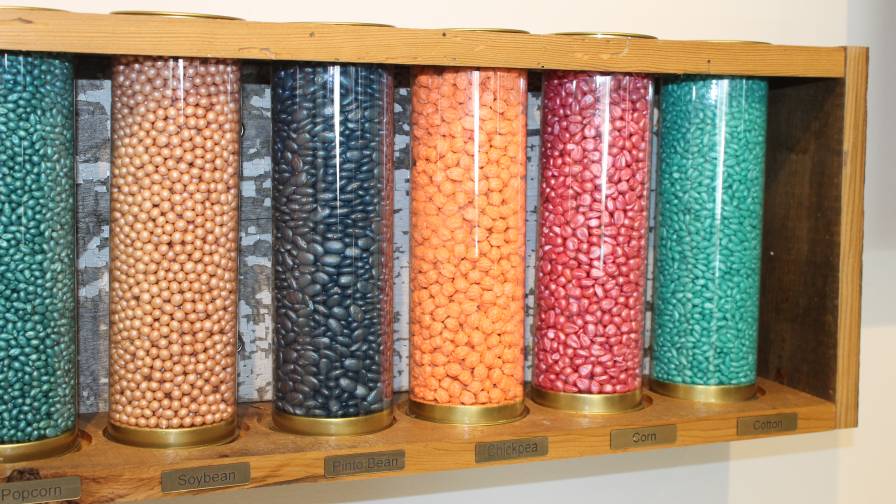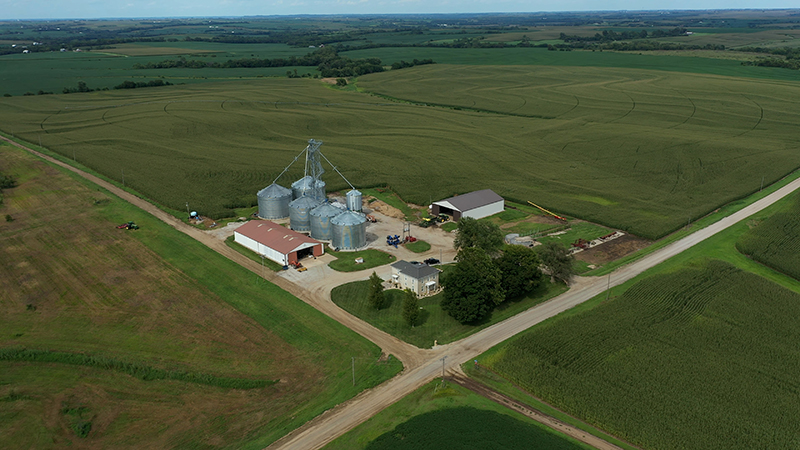Why Ag Retailers View Seed Care As a Key Part of Their Business

The seed treatment sector has remained a source of consistency throughout the past several growing seasons, according to leading retailers.
By its nature, the agricultural marketplace regularly experiences ups and downs across its spectrum of products/services offerings. However, the seed treatment sector has remained a source of consistency throughout the past several growing seasons.
According to Jacob “Jake” Larson, Seed Treatment Lead at Asmus Farm Supply (AFS), Rake, IA, this shouldn’t surprise those market observers who have paid attention to industry trends during this timeframe.
“This segment has been a growth vehicle in past years, but now more than ever,” says Larson. “In our area, farmers are turning the corner and beginning to intensely manage soybeans. Growers are now equipped to plant soybeans at the same time as corn or even before. Because of early planting, seed treatment is the first step in the process to reach their high yield goals.”
Kyle McClelland, Seed & Technical Agronomy Manager at BRANDT, Springfield, IL, agrees that soybeans popularity has helped drive seed treatment sales in recent years.
“For BRANDT, seed treatment is a foundation of a high yield strategy for soybeans,” says McClelland. “Yes, it has grown from fungicide to fungicide and insecticide to now [where] most of our soybeans get a fungicide, insecticide, and nematicide. But it unlocks the yield potential that our team can continue to manage with foliar nutrition and other high management strategies. None of that is possible without planting soybeans early, which treatment enables.”
Outside of the Midwest, in the Mid-South region, the motivation behind seed care’s continued growth is similar.
“Soybeans, cotton, and rice are crops that we have been able to downstream treat seeds customized to local markets and needs,” says Joey Caldwell, Senior Vice President, Retail at GreenPoint Ag, Decatur, AL. “The demand to plant earlier when conditions are marginal has increased the likelihood of seed treatments to give a positive response. Continued innovation with products that perform at the lower use rates by application directly to the seed is also a contributing factor.”
The numbers from across the ag retail world support Larson’s, McClelland’s, and Caldwell’s views on the continuing importance of seed treatments. According to the 2023 CropLife 100 survey of the nation’s top ag retailers, 93% of respondents said that their annual sales in seed treatment had grown or remained steady for the 2023 growing season, with only 7% of retailers reporting a decline in sales for this sector. In the recently completed 2024 CropLife 100 survey, these percentages for seed treatments growth/decline were identical.
A Part of the Production Plan
According to Harlan Asmus, Co-Owner of AFS, seed care is just part of the company’s overall strategy to help grower-customers maintain their crop yields regardless of environmental circumstances.
“We think that seed treatment is a part of a production plan,” says Asmus. “It is one part in building a plan to enable the plants to produce grain in a number of negative scenarios. Since our sales staff approaches the practice as a part of a whole plan and we are confident that it pays return-on-investment, most customers listen to the offer and accept our recommendation.”
AFS’ Larson adds to this assessment, pointing out that educating the growers about the benefits of seed treatments is also part of the mix. “I think it’s two parts,” he says. “We have been focusing on the value of seed treatment for years with our growers. The continued efforts show them the value and need for seed treatment no matter the planting date or commodity price. Recently we have been dealt a good hand with early planting dates and growers want all the protection they can get.”
BRANDT’S McClelland agrees. “We consistently prove the value to our customers,” he says. “We have colleagues that are trained professionals in the seed treatment space and take pride in their work. We ensure every seed treated in our facilities is handled carefully and given the best opportunity to grow with vigor when it goes in the soil.”
Another ag retailer that sees education as a key part of the equation for seed treatments is Heartland Cooperative, West Des Moines, IA. “The biggest challenge is educating the grower on the differences in products available in the marketplace,” says Chris Behrens, Executive Vice President of Sales and Marketing. “There are many cheap treatments options currently available that don’t offer a lot of protection. Are you just getting colored seeds, or are you getting a treatment product that’s going to be beneficial in getting your crop off to a solid start? Training our sales team on the benefits of seed treatment comes first. They are the direct link to the grower.”
Partly in response to offer better seed treatment options to grower-customers, Heartland Coop built and launched its own proprietary seed treatment blend and product line in 2024, complete with marketing materials for our sellers.
“This allowed us to tell our own story about a premium product tailored to specific pest issues in our trade area,” says Behrens. “Our propriety product launch provided a unique opportunity for sales and profit potential in 2024. We saw an increase in percent of units treated, and in most cases, an increase to premium treatment packages.”
In addition to education, another key challenge for ag retailers today touting the advantages of seed treatment is timing, says AFS’ Larson. “Growers now own multiple planters or have upgraded in size or speed,” he says. “We must efficiently treat the same number of units in less time. Treatment scheduling is managed in much more detail. It is no longer waiting for the farmer to show up. We have developed systems to manage the workload.”
A Bright Future
Looking down the road, Larson foresees many more growth years ahead for seed care. “I anticipate seed treatment being a major growth area in the years to come,” he says. “It has become common practice for growers, and they are looking for innovation in this department.”
In his mind, says AFS’ Asmus, one of these new innovations could involve a broadening of the in-furrow market involving seed care products. “There will always be value in getting something in the furrow to help young growing plants get established stronger,” he says. “What may be considered seed treatment today may be an in-furrow treatment in the future allowing for newer things to be seed applied.”
BRANDT’s McClelland also predicts a bright future for seed treatments within the marketplace. “Seed treatment will continue to be a building block for growers that want to achieve higher yields than their neighbors,” he says. “As volatile weather continues to plague our early planting aspirations, we will continue to rely on seed treatments of today and the future. The seed lubricant/talc and graphite space continues to evolve. It could potentially be a more efficient and strategic spot to place biologicals, micronutrients, and potentially seed treatment, for higher yields.”
Still, there are a few factors that could potentially challenge the growth of seed treatments for ag retailers over the next few years. According to Heartland Coop’s Behrens, one of these could be grower-driven. “As farmers get bigger and look for opportunities to cut costs, we’ve seen a movement toward growers purchasing their own seed treaters,” he says. “The change will continue to put pressure on our custom treatment business. However, this transition will allow us the opportunity to sell our custom blend directly into this market segment.”
Another potential hinderance to seed care growth could come from the legislative/legal arena. In June 2023, a lawsuit was filed by the Center for Food Safety and the Pesticide Action Network North America in the federal U.S. District Court of Northern California in San Francisco challenging seed treatments. The groups in the lawsuit alleged that since the neonicotinoid insecticides are commonly used on some treated seed, they can “cause widespread harm to birds, pollinators such as bees, beneficial insects, and endangered species.”
Later that same month, the New York State Legislature passed a bill prohibiting the sale or use of corn, soybeans, or wheat seed coated with five different neonicotinoids unless the state environmental and conservation commissioner determined there was not adequate alternatives. This legislation would go into effect in 2027.
“Increased pressure on neonicotinoid insecticides and the potential trickledown effect to other products could hurt this view,” says AFS’ Larson of seed care’s future growth.
Perhaps a bigger legislative wild card for seed treatments, says GreenPoint Ag’s Caldwell, could come from the recent changes to pesticide regulations tied to the Endangered Species Act (ESA). This legislation is expected to lead to many new regulatory hoops for suppliers, ag retailers, and their grower-customers to jump through over the next few years.
“What about ESA and the impact on labeling for seed treatments?” he says. “Do we continue to have partners in the industry to innovate and advocate for retailer downstream treatment? When I mention innovation, does the kind of soil insight from testing create opportunities for growers to demand greater customization for downstream treatment that greatly increases the return-on-investment?”






